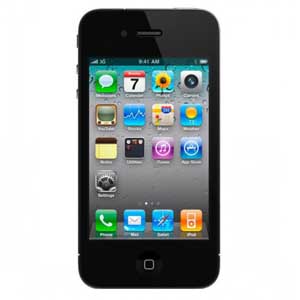22.07.2013The iPhone 4 remains way more popular than any 3-year-old iPhone ever has

As of June, the iPhone 5 was only nine months old, but it continued to lose buyers to a nearly three-year old and a 21-month old model iPhone, according to data compiled by Consumer Intelligence Research Partners.
A trend that began almost as soon as the iPhone 5 went on sale last fall continued during the April-June quarter among U.S. buyers: a larger percentage than ever is choosing the iPhone 4 and 4S, which are free and $99, respectively, with a two-year wireless contract, over the latest model iPhone.
Notice in the CIRP chart below, for example, how the iPhone 4, which was released in June 2010, has actually increased its popularity since the debut of its successors, not decreased as you might think would happen to an older phone with somewhat out-of-date technology:
Sales of the iPhone 4S dipped a little bit between the first and second quarters of this year, while the 4 grew. At the same time the iPhone 5 as a share of overall iPhone sales sunk slightly during the last quarter from 53 percent of sales to 52 percent.
The reason is pretty obvious: a free or $99 iPhone that looks basically similar to the $199/$299/$399 iPhone is very attractive.
Some carriers may also be emphasizing the older devices. CIRP also has some interesting data on which iPhone model carriers are selling more of:
Sprint, for example, is split on the amount of the iPhone 4S and iPhone 5 it sells, while T-Mobile is by far the strongest with the iPhone 5 with 82 percent of its iPhone sales during the quarter. AT&T and Best Buy are also heavily skewed toward iPhone 5 sales. Apple’s iPhone 5 sales as a share of overall iPhone sales, is among the lowest: just under half. Meanwhile, the iPhone 4S is doing almost nearly as well as the iPhone 5 in the company’s own stores.
It became apparent to most from the start that the iPhone 5 was much different than its predecessors: its popularity as a share of new iPhone purchases has fallen off faster than any others. After launching in September and accounting for 68 percent of all iPhone sales in October, by March it accounted for just 53 percent of iPhone sales. The iPhone 4S, released in October 2011, for example, still accounted for 63 percent of sales 10 months after it launched.
This is not necessarily bad news for Apple: it’s a plus that Apple is able to attract customers looking for a less expensive smartphone, instead of them choosing an Android or Windows device that’s cheaper, for example. Apple CEO Tim Cook said specifically last quarter that the company is hopeful the iPhone 4 will be a tool to recruit new iPhone owners, especially overseas and in emerging smartphone markets.
But the prices of the (subsidized) iPhone 4 and 4S are lower, which can impact Apple’s overall financial results, bringing down the average selling price as well as potential profits from iPhones.
The iPhone is Apple’s most important product and sales of it, margins on the device and Apple’s ability to continue selling it in large numbers nearly seven years after the debut of the original will feature heavily inot the company’s fiscal third-quarter earnings scheduled to be published tomorrow.
back
 As of June, the iPhone 5 was only nine months old, but it continued to lose buyers to a nearly three-year old and a 21-month old model iPhone, according to data compiled by Consumer Intelligence Research Partners.
As of June, the iPhone 5 was only nine months old, but it continued to lose buyers to a nearly three-year old and a 21-month old model iPhone, according to data compiled by Consumer Intelligence Research Partners.